FAQs
General
How does deployment work?
Plan — Share your site maps, prevailing wind data, and reporting needs. We return an optimized TrelliSense layout.
Install — Professional teams set, mount, solar-power, and align retroreflectors and sensors—usually in a single day.
Commission — Baseline tuning and optional cross-checks. One month of data establishes alert thresholds and reporting cadence.
Operate — Live dashboards, real-time alerts, and API feeds integrate directly into your workflow.
Report — Choose reporting frequency; receive quarterly business reviews with trend analysis, insights, and optimization recommendations.
How many paths do I need?
Our sensors are modular and customized to every site. Every project starts by carefully reviewing customer requirements (e.g. do you just want to see big leaks, or do you want to quantify site-wide every day?) and reviewing the site layout for geometric optimization. Then we propose and confirm a sensor layout prior to installation.
How do you localize?
We collect our own weather data (including temperature, wind, pressure, and humidity) to support emissions localization. We also use these data in our spectral processing algorithms to maximize accuracy.
Do we need downtime to install?
Never. Sensors are mounted and aligned outside of critical operations following site safety practices.
Are lasers bothersome?
No. The lasers are near-infrared, meaning they are invisible to humans and animals. They are very low-power and eye-safe even with indefinite exposure.
What about calibration and QA?
All sensors are factory-calibrated and do not require field procedures. Scheduled checks and QA/QC records are included in your tech brief.
How do we access the data?
Your data belongs to you, full stop. All data is available in TrelliSense’s interactive web dashboard, and is downloadable for internal analysis or reporting purposes.
Oil & Gas
How does TrelliSense compare to OGI cameras or satellites?
TrelliSense offers uninterrupted, site-level methane leak detection at a fraction of the cost of satellites, and without OGI blind spots.
Does it align with OGMP 2.0 and EPA methane rules?
Yes, and we will pursue regulatory approval as applicable. TrelliSense provides MRV-ready data trusted by regulators and investors.
Does TrelliSense align with methane regulations?
Yes. TrelliSense provides MRV-ready data consistent with EPA methane rules, OGMP 2.0 frameworks, and investor-grade reporting requirements.
Do sensors disrupt operations during installation?
No. Hardware installs quickly, outside of critical operations, with no downtime.
What site sizes can TrelliSense cover?
One sensor can cover anywhere from one to 800 meters, with multiple laser paths, and can expand to cover sites of all shapes and sizes. Our systems are modular and thus can be customized around any site.
Landfills & Waste
Can TrelliSense monitor a landfill’s working face?
Yes - our paths span as far as 400 meters. Sensors can be repositioned as the active face moves, ensuring ongoing landfill gas monitoring compliance.
How does this compare to quarterly SEM surveys?
TrelliSense supplements labor-intensive flux chambers and handheld sniffers with 24/7 continuous emissions monitoring, cutting costs and blind spots.
Can TrelliSense monitor the working face?
Yes. Our laser paths span up to 400 meters and can be repositioned as the working face moves, ensuring uninterrupted coverage without placing sensors within active areas.
How does this compare to quarterly SEM surveys?
TrelliSense supplements or replaces SEM surveys with 24/7/365 data. Instead of snapshots, you gain continuous visibility, reducing blind spots and compliance risk.
Will installation disrupt landfill operations?
No. Sensors mount outside of critical areas, are solar-powered, and are typically installed in 1-2 days.
Agriculture
What can TrelliSense measure on farms?
Our system tracks methane emissions from feedlots, milking parlors, digesters, manure lagoons, and direct emissions from fields.
Why not just use cow helmets or towers?
At herd scale, those methods become too expensive and impractical to collect sufficient sample sizes. TrelliSense delivers scalable, site-wide methane measurement for carbon credits and emissions inventories by measuring over large areas on a sub-minute frequency.
What can TrelliSense measure on farms?
Our system tracks methane from dairies, feedlots, digesters, fields, and lagoons—scalable to whole-site coverage.
Is the data carbon-credit ready?
Yes. TrelliSense generates MRV-ready logs that align with leading registries and buyer requirements. We are happy to work with our clients to develop custom, robust methodologies incorporating direct measurement.
Does it require downtime to install?
No. Sensors are mounted outside critical areas and typically operational within a single day.
